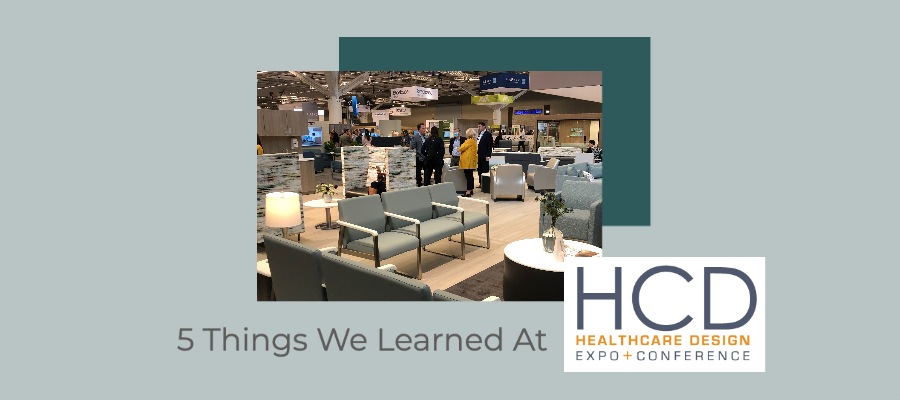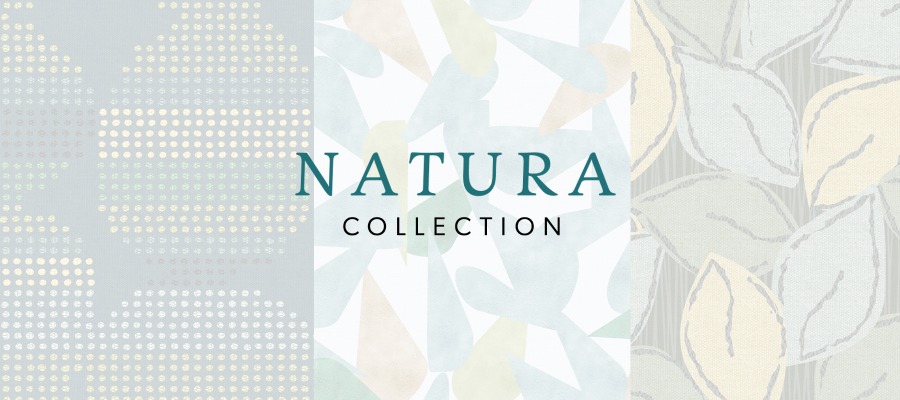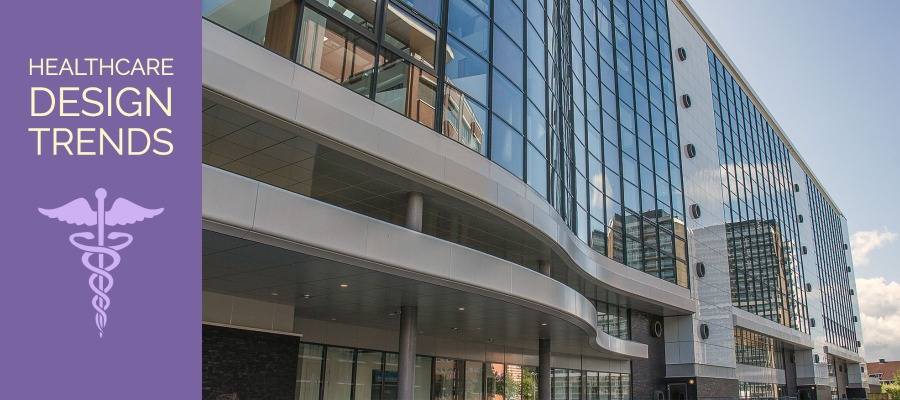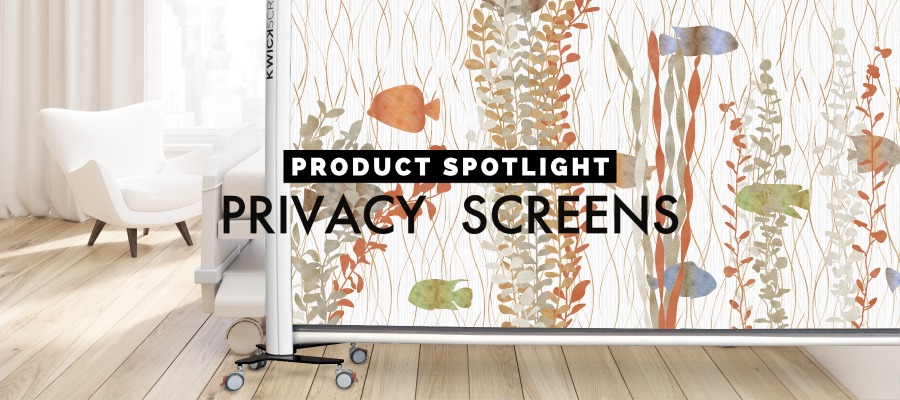
5 Things Learned at HCD Expo + Conference
Last month we exhibited at the HCD Expo + Conference in Cleveland, Ohio. This event was a great opportunity to meet with lots of people working in the healthcare design market. We were excited to introduce them to Design Pool and our new R&R Collection. While exhibiting, we also spent time walking the Expo Hall to spot trends in healthcare design. In addition, we also attended conference sessions to learn about the industry from experts in the field. In all, we attended 5 sessions:
- Using Mickey’s 10 Secret Design Commands to Create a World-Class Guest Experience, by Steven Langston
- Neuroscience-Based Insights in Design, Boosting Healing, Health, and Well-Being, by Sally Augustin
- Twelve Design Guidelines for Dementia-Friendly Healthcare Facilities, by AJ Thomas, Jan Dougherty, Jana Skidmore, and Sepideh Valian
- How the Arts Impact the Healthcare Experience, by Ellen Rudolph, Francois Bethous, Lisa Gallagher, and Maria Eva Jukic
- What Healthcare Can Learn from Airport Design, by AJ Thomas, Amy Zitny, Jonathan Massey, and Scott Gorenc
What we learned at the HCD Expo + Conference
If a space is too visually complex, it can exhaust your senses.
This is especially true for anyone with dementia. When we wake up each day, we’re feeling rested and refreshed. We are able to process a lot of information and make many different decisions. As the day progresses, our brain becomes tired. This impacts our ability to make good decisions. It’s one of the reasons why around 3:00 PM an unhealthy snack is a lot harder to resist, your willpower is exhausted.
This all happens faster for dementia patients. From the start of their day, processing information is already challenging. They experience what is called a “sundown” effect in the late morning or early afternoon because their brains get exhausted more quickly. If the environment they are in is very visually complex, it can take a lot of mental energy to process all of the information. This ultimately leads to an earlier sundown and a very stressful environment for the person with dementia.
People naturally gravitate toward natural light.
Ray Anderson, the founder of Interface Fabrics, often asks people to close their eyes and picture themselves somewhere they’re happy. Inevitably, most people picture themselves outside. Nature is very so important to us as humans and many studies have proven the healing properties of nature. Even when inside, if there are windows in a room, people will automatically go toward them upon entering a building. Finding new ways to bring nature inside can have a huge positive impact on the health outcomes of people using a space.
Signage doesn’t necessarily need to be overhead.
In most environments where people are moving through a space they are unfamiliar with, like an airport, hospital, or college campus, signage is often overhead. Yet, most humans look down as they are walking to keep themselves from tripping. This becomes even more true as you age, and some might argue more true as we all walk around with phones in hand. Designers and wayfinding experts are starting to rethink placement and are adding signage to the floor. On a recent trip through Logan Airport, I noticed all the signage communicating a temporary move to the taxi pickup location was on the floor. This proved very easy to follow, especially in a crowded, high-traffic environment.
Art is super important for any environment.
Visual and performing arts have multiple benefits in healthcare and commercial interiors. Art is not a luxury only incorporated if there is extra room in the budget. Rather, it’s a critical element in the design process and designers are incorporating art in creative ways. For example, imagery and music are sometimes used as wayfinding to help move people around a space in a relaxed environment. Art can also be part of an institution’s programming to involve more of a person’s senses and can provide a respite for patients and caregivers in stressful situations.
Creating flexible design is crucial for the future.
Most buildings, whether a hospital, airport, or office building, are designed to last for at least 50 years. Nobody can predict the needs of the future, but designers need to be aware of the possibilities that may arise in a space. Today, they are creating spaces with the need for future expansion or the ability to adapt to a sudden disruption from the start of the design process. Whenever possible, designers involve the people that will actually be using the space in the design process. In the case of healthcare interiors, this includes patients and families, as well as staff.
The HCD Expo + Conference will take place next year in San Antonio, Texas on October 8 – 11, 2022. If you work in the field of healthcare design, this event is an absolute must for professional development and networking.
Share this post
Author
DESIGN/COLOR TRENDS AND AWESOME INFORMATION IN YOUR INBOX
Sign up for our monthly trend letter







